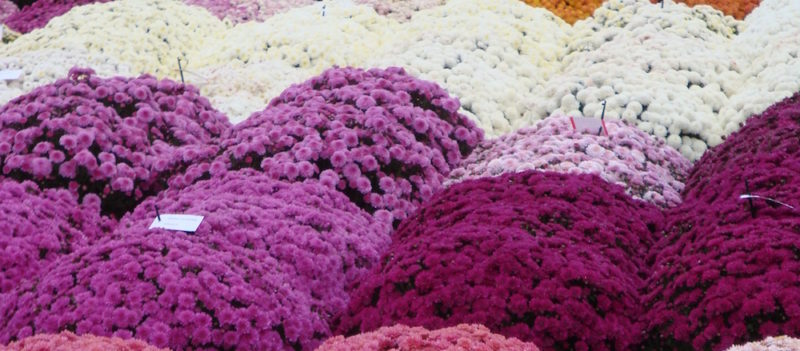
Using a GA to Increase Plant Height
There are a number of reasons why a grower might want to increase the height of a plant. Most commonly, plants are too short because a plant growth retardant (PGR) was applied at too high of a rate or volume. Another common reason is plants are induced to flower before they have developed the desired amount of vegetative growth. This can happen in chrysanthemum, for example, when the summer nights are cool and flowering is induced early, or in poinsettia if an insufficient number of long days are provided before flower induction under short days.
Regardless of the cause, the most common technique to increase plant height of containerized flowering plants is an application of Fresco (Fine Americas) or Fascination (Valent Professional Products) by someone certified as a pesticide applicator.
These products both contain equal amounts of two gibberellins (GA4+7) and the cytokinin benzyl adenine (BA). The GA4+7 is what increases extension growth, including elongation of the stems as well as expansion of the leaves (and bracts in poinsettia). They have a restricted entry interval (REI) of four hours.
General guidelines. Apply as early as possible to obtain the greatest response. Applications can only increase extension of new growth, not old growth. If plants have already terminated in a flower, the opportunity to increase plant height decreases as the plant nears maturity.
Spray guidelines. Ensure thorough canopy coverage. To do so, use a heavy spray such as 3 quarts per 100 square feet, and add a surfactant to ensure good contact with leaves and stems. For most crops, a suggested concentration of a foliar spray is 3 to 5 ppm. To maximize responses, ensure plants are well watered and apply during slow-drying conditions, such as early in the morning or on a cloudy day.
Drench guidelines. Until recently, these GA products were only labeled as foliar sprays. However, research has shown that Fresco is also effective when applied as a sprench or drench, and the product is now labeled for substrate applications. Although much more product is used with a drench application, responses are sometimes more desirable than with foliar sprays. Apply standard drench volumes, for example 3 ounces per 5-inch pot and 4 ounces per 6-inch pot. Drenches should be applied to moist — but not wet — media, and none should run through the pot.
Applications on chrysanthemum. Most mums are produced in the summer and early fall, when light levels are high and temperatures are warm, so consider starting with a 5- to 8-ppm rate. Early applications are more effective at increasing height than late applications. However, early applications — especially as a spray — can slightly reduce flower number. Sprays can also cause a slight delay in flowering and a mild, temporary chlorosis. Therefore, at least experiment with Fresco drenches to obtain the best results on mums.
Applications on poinsettia. The best time to increase plant height is at or before first bract color. A single spray application of Fresco or Fascination at 3 ppm increases plant height by 1 to 2 inches. Based on preliminary research, similar rates of Fresco (3 to 5 ppm) is suggested when used as a drench. Another use of these products is to increase bract size, and our research shows that the most effective time to make a foliar spray application (at 3 ppm) is three to four weeks after first color. When applied this late in production, there was little effect on plant height.
There are other GA products labeled for floriculture crops that contain GA3, such as Florgib 4L and ProGibb T&O. These are usually more active than products containing GA4+7 and, thus, the suggested concentration is about half that for Fresco or Fascination.
While a PGR overdose can be overcome by a GA product, an over-application of GA cannot be overcome by a PGR. Therefore, small-scale trials are suggested with GA products to determine appropriate rates for the desired responses. Finally, it usually takes seven to 10 days to observe a full response to a GA product. Therefore, wait at least one week before deciding whether a second application is needed to obtain the desired crop response.


 Video Library
Video Library 




















